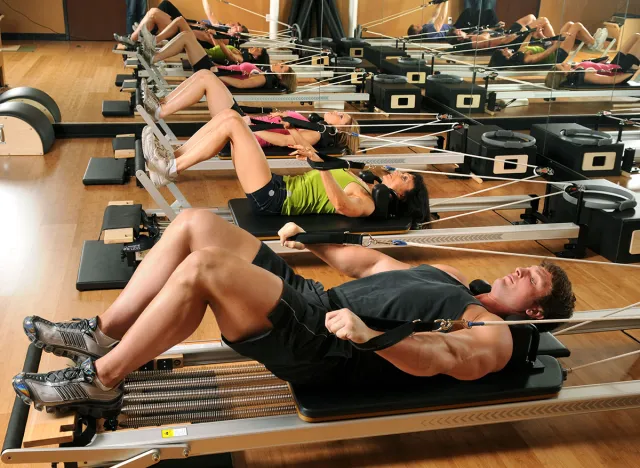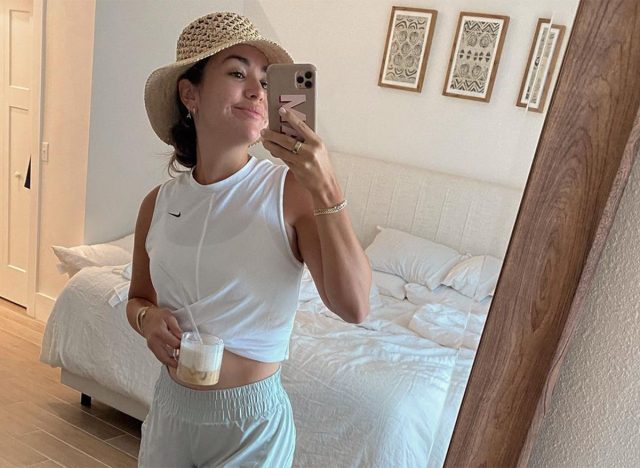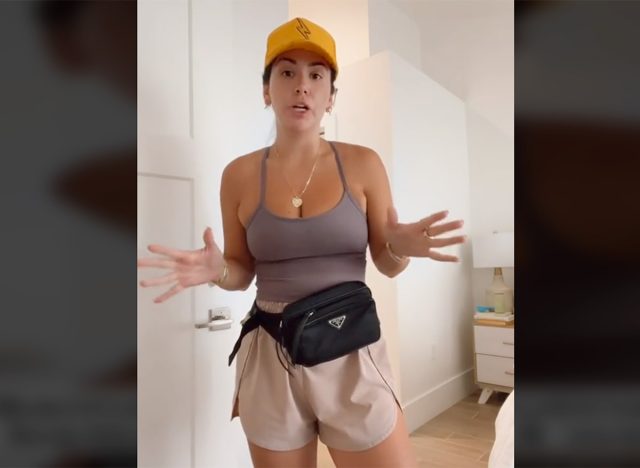I Added These Simple Things to My Walking Routine And Now I See "Better Results"
Alexandrea Garza (@alexandreagarza) is a social media influencer who regularly shares about all the health habits that keep her in shape. In one of her viral posts, she revealed that after several months of the same exercise routine, she started hitting a plateau. However, after making a few simple tweaks, she is making more progress. "I've been doing the same workout routine for eight or nine months now, but I'm actually starting to see much better results within the past couple of weeks. And I'll tell you what I've changed," she says in the clip.
She Walks 10,000 Steps Per Day
@alexandreagarza How I'm starting to see better results from my workouts. This + adding in more protein and im seeing a difference within weeks. #pilates #10ksteps #walkingroutine ♬ original sound – alexandreagarza
"So I always get my 10,000 steps in a day. I go for a walk. I'm getting ready to go for one right now," she starts off. 10,000 steps is the gold standard if you want to lose weight, according to science. One study published in Obesity found a link between walking 10,000 steps a day and weight loss and weight management. Other studies – including those published in JAMA Neurology and in JAMA Internal Medicine – linked walking 10,000 steps a day to less dementia and less cardiovascular disease overall, with less heart disease, less heart failure, and fewer strokes.
But She Upped Her Game, Transitioning to "Power Walks"

"But instead of just doing a leisurely walk, I now do power walks," she reveals. I actually use my Peloton app. I do their outdoor walks, so they're kind of like interval power walks, moderate walks, or just much faster walks. I feel it so much more in my legs and my glutes and my hamstrings," she continued. It's such a better workout."
Related: #1 Hack to Make Maintaining Your Weight Loss Easy, According to Nutritionist
She Also Does Pilates

She also does Pilates, which, according to research, helps increase muscle strength, endurance, and flexibility and improves posture and balance. "I've been doing that for about nine-ish months now. I used to just do kind of classic on the reformer, low, slower paced," she says.
She Increased the Level

Similar to tweaking her walking routine, she amped up her Pilates workouts on the reformer. "I've moved up to their highest level, which is called mixed equipment. So, it's much heavier resistance. It's like a true strength workout, and I'm sweating. It's just much harder," she says.
She Claims Her Results Are "Much Better"

The result? "So I'm doing the same workouts, but I've just leveled up the intensity while still keeping it low-impact, and I've seen much better results so far," she explains.
Related: I Started to Walk 1 Mile Every Day and Here's How I Made It Happen
Why It Is Important to "Level Up" Intensity Over Time

When it comes to weight loss and building muscle, you need to regularly amp up intensity if you want to continue seeing results. This is called hitting a plateau. "To lose more weight, you need to either increase your physical activity or decrease the calories you eat. Using the same approach that worked at first may maintain your weight loss, but it won't lead to more weight loss," explains the Mayo Clinic. In terms of exercise, you can either work out longer or harder.
💪🔥Body Booster: If you have hit a "plateau" in your weight loss or fat-burning journey, either amp up your fitness intensity or opt for longer workouts. And if you enjoyed this article, don't miss 12-3-30 Walking Method: 20 Proven Tips to Lose Weight Faster.





